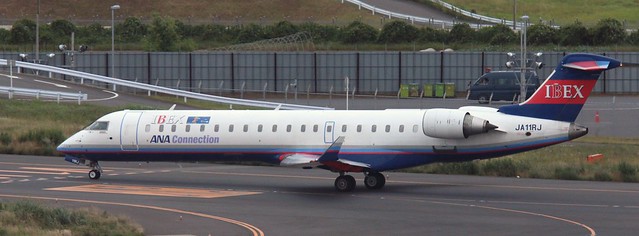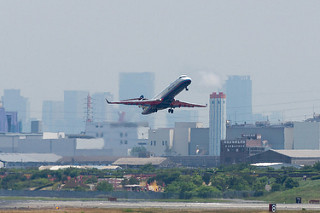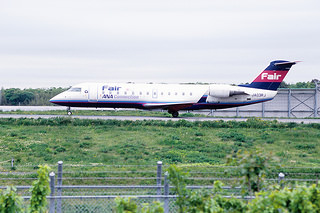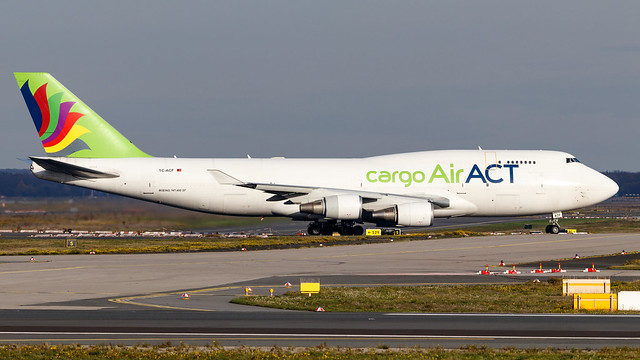Ibex CRJ7 near Fukuoka on Apr 18th 2022, loss of left and right airspeed indications
Last Update: October 6, 2023 / 17:17:26 GMT/Zulu time
Incident Facts
Date of incident
Apr 18, 2022
Classification
Incident
Airline
Ibex Airlines
Flight number
FW-18
Departure
Sendai, Japan
Destination
Fukuoka, Japan
Aircraft Registration
JA07RJ
Aircraft Type
Canadair CRJ-700
ICAO Type Designator
CRJ7
Japan's TSB reported on Apr 25th 2022 that they opened an investigation into the occurrence characterized as "multiple failures that impeded the safety of aircraft operation".
On Mar 30th 2023 the JTSB stated in a progress report that both the captain's and first officer's air speed indications were slowly decreasing while enroute at FL360. The crew continued using attitude and engine power as well as using the stand by instruments. During the descent towards Fukuoka the airspeeds recovered. The investigation needs to hear further opinions while trying to confirm and analyse the facts of the investigation so far.
On Oct 6th 2023 the JTSB released their final report concluding the probable causes of the serious incident were:
The JTSB concludes that it is most likely that the probable cause of this serious incident was that the right and left sides of the pitot system became blocked while the airplane was flying at FL360, the failure airspeed indication temporarily occurred on both of the PIC side and the FO side.
Regarding the pitot system being blocked, it is probable that the aircraft flew in an area where ice crystals existed.
The JTSB analysed:
EICAS Messages
The JTSB concludes that both EICAS messages “STALL FAIL” and “RUD LIMIT FAULT” that were displayed at the time of the occurrence of this serious incident will be displayed when there is a difference in calculated airspeed value between the ISI and the two ADCs, therefore, they most likely occurred because the pitot system became blocked.
Responses of Flight Crewmembers
The JTSB concludes that it is certain that the events the PIC recognized for the first time were the EICAS messages of “STALL FAIL” and “RUD LIMIT FAULT”, and the PIC started the actions immediately according to the Operation Procedures for responding to the EICAS message of “STALL FAIL”. The PIC noticed the incorrect IAS indication while taking the actions, but the IAS indication failure had been eliminated when almost completing the actions, therefore, the PIC most likely judged that it would be unnecessary to perform the Emergency Procedures for Unreliable Airspeed In-flight. However, the PIC disengaged the auto-pilot and flight director to prevent unintended airplane behavior and continued to fly while monitoring the ISI display and the engine instruments, which is the same procedure as the Emergency Procedures for Unreliable Airspeed In-flight, thus it was appropriate.
FDR Records
The IAS of the airplane is recorded as CAS*10 1 for the left side of the Pitot/Static system and as CAS 2 for the right side of the Pitot/Static system, respectively. CAS 1 and CAS 2 in normal flying conditions are recorded as close values, respectively, while changing slightly depending on the atmospheric conditions even if flying at a constant speed. According to the FDR records, at 19:58:08, the CAS1 became constant (Figure 10 a.), and the CAS2 continued to change even after that. The JTSB concludes that it is highly probable that this is because the left side of the pitot system, based on which the CAS1 is calculated, became fully blocked. At 20:11:44, the airplane commenced to descent. 20;12:10, the right side of the pitot system became fully blocked, while the pressure of both sides of the pitot system was kept due to the blockage, the static pressure increased as the airplane descended, therefore,the values of the CAS1 and CAS2 highly probably decreased. The airplane continued to descend, and both values of the CAS1 and CAS2 were recovered almost simultaneously at 20:21:41, therefore, at this time, the blocked conditions were highly probable resolved. After the blocked conditions were resolved, the IAS values had most likely indicated normal values until the landing.
Incident Facts
Date of incident
Apr 18, 2022
Classification
Incident
Airline
Ibex Airlines
Flight number
FW-18
Departure
Sendai, Japan
Destination
Fukuoka, Japan
Aircraft Registration
JA07RJ
Aircraft Type
Canadair CRJ-700
ICAO Type Designator
CRJ7
This article is published under license from Avherald.com. © of text by Avherald.com.
Article source
You can read 2 more free articles without a subscription.
Subscribe now and continue reading without any limits!
Read unlimited articles and receive our daily update briefing. Gain better insights into what is happening in commercial aviation safety.
Send tip
Support AeroInside by sending a small tip amount.
Related articles
Ibex CRJ7 near Fukuoka on Oct 30th 2019, cracked windshield
An Ibex Airlines Canadair CRJ-700, registration JA11RJ performing flight FW-16 from Sendai to Fukuoka (Japan) with 69 passengers and 4 crew, was…
Ibex CRJ7 at Fukuoka on Sep 23rd 2018, hydraulic problem
An Ibex Airlines Canadair CRJ-700, registration JA09RJ performing flight FW-85 from Komatsu to Fukuoka (Japan) with 58 people on board, was…
Ibex CRJ7 at enroute on Apr 17th 2016, loss of cabin pressure
An Ibex Airlines Canadair CRJ-700, registration JA06RJ performing flight FW-84 from Fukuoka to Komatsu (Japan) with 40 people on board, was on…
Ibex CRJ2 at Tokyo on Apr 3rd 2015, wing tip strike on landing
An Ibex Airlines Canadair CRJ-200, registration JA03RJ performing flight FW-14 from Hiroshima to Tokyo Narita (Japan) with 38 people on board, landed…
Newest articles
Avianca Mexico A333 at San Pedro Sula on Nov 18th 2025, runway excursion on line up
An Avianca Cargo Mexico Airbus A330-300 freighter, registration N337QT performing flight 4R-4274 from San Pedro Sula (Honduras) to Miami,FL (USA),…
ACT B744 at Hong Kong on Oct 20th 2025, runway excursion, aircraft broken up in waters
An ACT Airlines Boeing 747-400 freighter on behalf of Emirates, registration TC-ACF performing flight EK-9788 (dep Oct 19th) from Dubai Al Maktoum…
Subscribe today
Are you researching aviation incidents? Get access to AeroInside Insights, unlimited read access and receive the daily newsletter.
Pick your plan and subscribePartner

ELITE Simulation Solutions is a leading global provider of Flight Simulation Training Devices, IFR training software as well as flight controls and related services. Find out more.
SafetyScan Pro provides streamlined access to thousands of aviation accident reports. Tailored for your safety management efforts. Book your demo today
AeroInside Blog
Popular aircraft
Airbus A320Boeing 737-800
Boeing 737-800 MAX
Popular airlines
American AirlinesUnited
Delta
Air Canada
Lufthansa
British Airways




